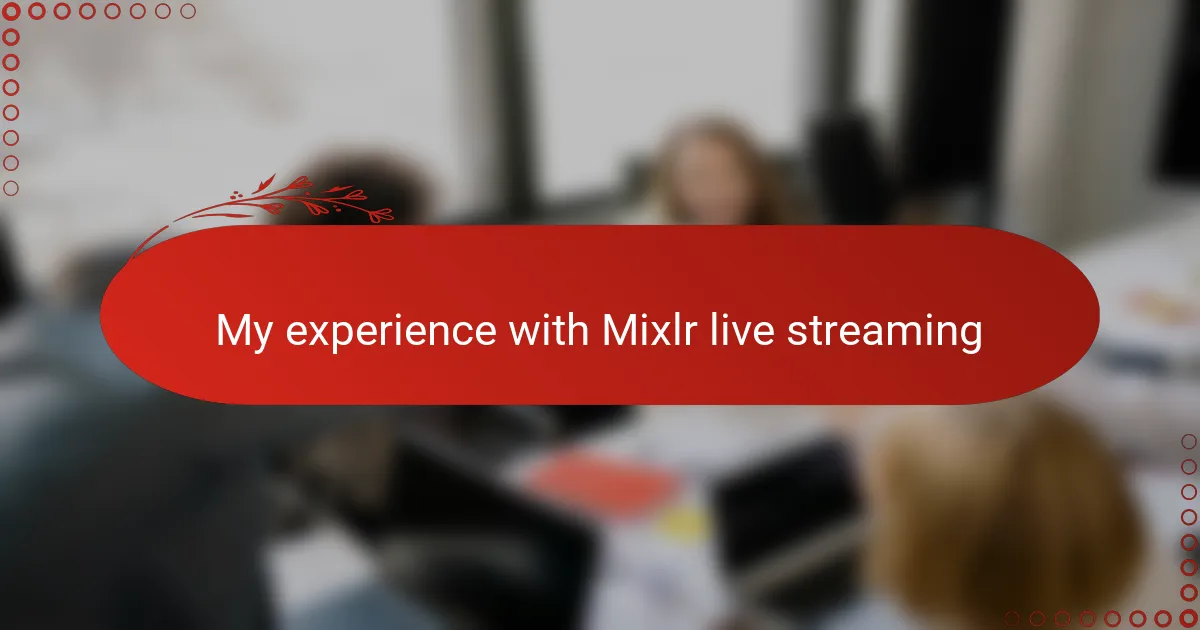Key takeaways
- Mixlr streaming simplifies the broadcasting process, allowing users to focus on their content rather than technical complexities.
- Successful radio broadcasting relies on a clear microphone, reliable transmission, and engaging content.
- Stable internet connection and streamlined equipment are essential for smooth live streams.
- Real-time audience engagement enhances listener loyalty and creates a sense of community during broadcasts.
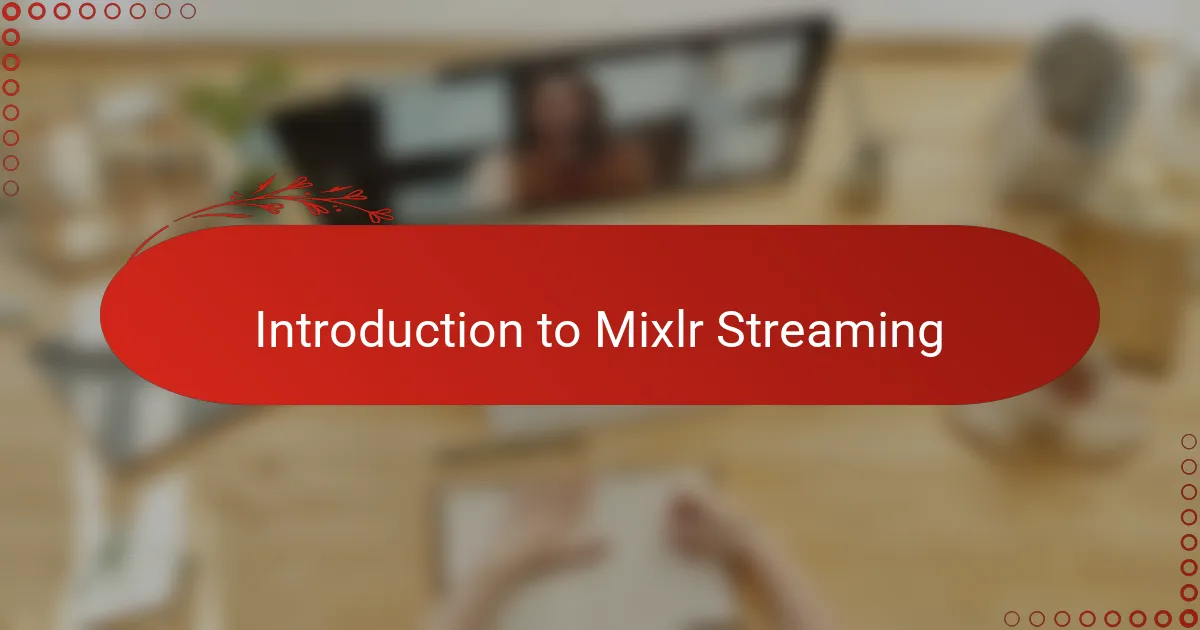
Introduction to Mixlr Streaming
Mixlr streaming caught my attention because it promised simplicity without sacrificing quality. Have you ever struggled with complex broadcasting software that just drains your energy before you even go live? This platform felt like a breath of fresh air, making live audio streaming approachable and straightforward.
What stood out to me was how quickly I could set up my broadcast. Within minutes, I was live, sharing my voice with listeners, without fumbling through confusing settings. It made me wonder—how often do we overcomplicate something that should feel natural and effortless?
Using Mixlr, I found a connection not just through sound but through the ease it provided. There’s something satisfying about knowing your focus can stay on the content, not the technical hassles. Have you ever wished your streaming tool just got out of your way? For me, Mixlr did exactly that.
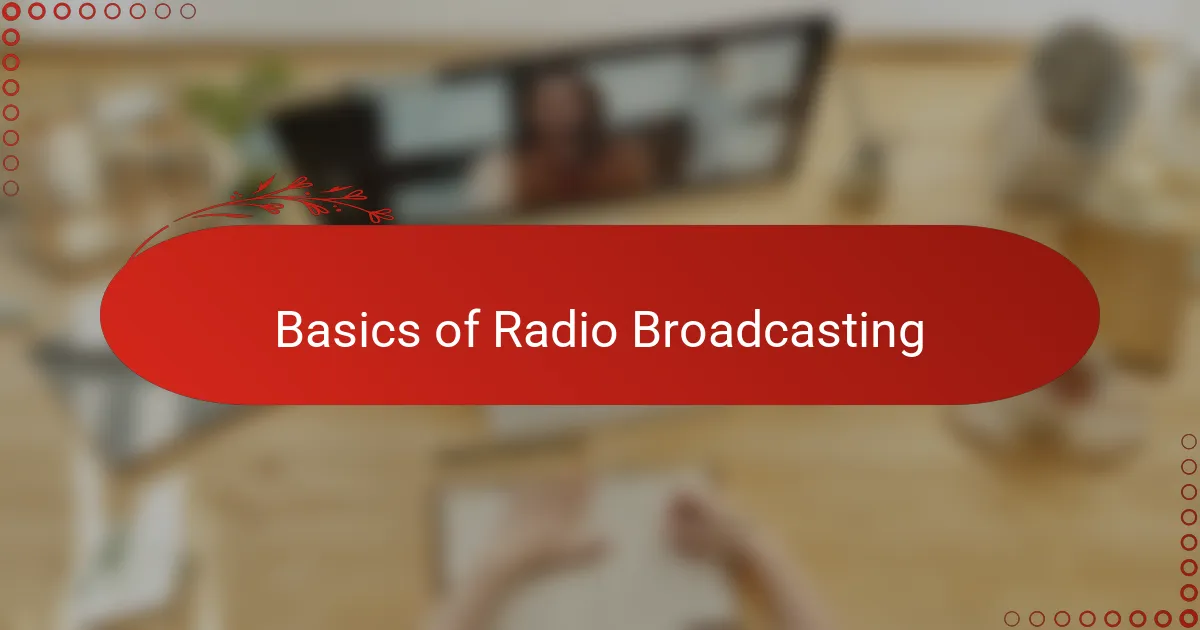
Basics of Radio Broadcasting
Radio broadcasting, at its core, is all about connecting with an audience through sound. From my experience, the basics revolve around three key elements: a clear microphone, a reliable transmission method, and engaging content. Without these, your message can easily get lost in the noise.
I remember my early days struggling to balance technical setups while trying to keep my energy up on air. It made me realize how important it is to have a solid grasp of the fundamentals before diving deeper. After all, if the basics aren’t right, no amount of fancy tech can save the broadcast.
Have you ever thought about why some radio shows feel so effortless? It’s because the hosts have mastered these essentials. They know their equipment works, their signal reaches the listeners, and they have something worth saying. That’s the foundation every aspiring broadcaster needs to build on.
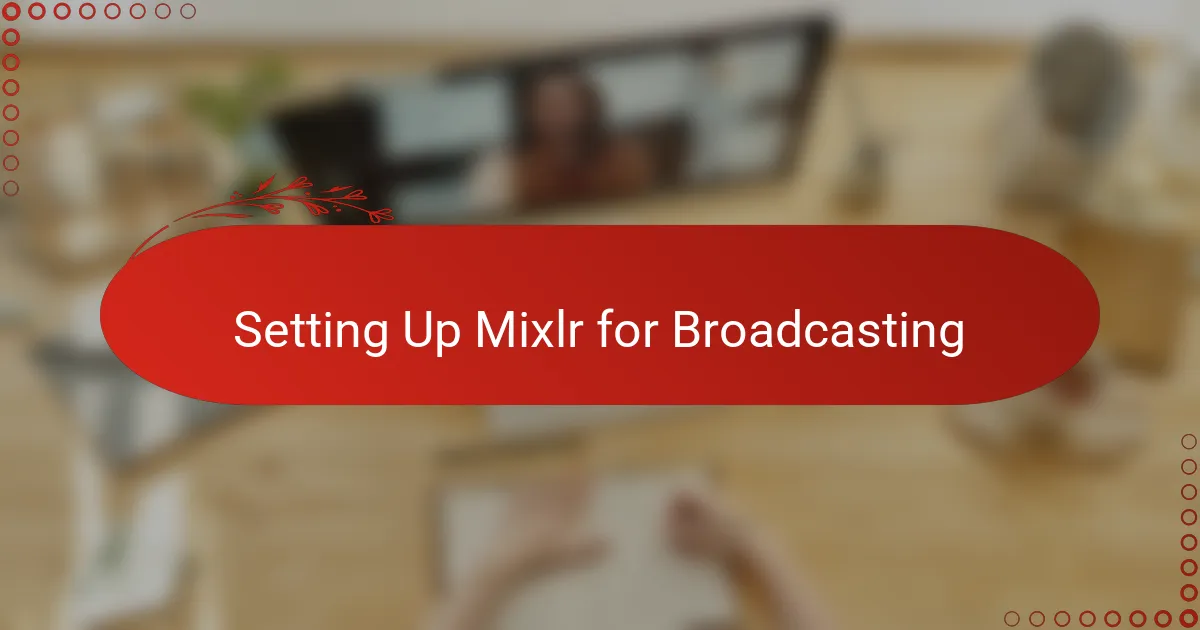
Setting Up Mixlr for Broadcasting
Getting started with Mixlr was surprisingly straightforward for me. I simply downloaded the app, created an account, and within minutes, I was navigating through the basic setup options. Have you ever been relieved when a new tool just works without overwhelming menus or endless configurations? Mixlr gave me that feeling right away.
When setting up, choosing my audio input was the first step, and it was as simple as selecting the microphone I wanted to use. I appreciated how Mixlr didn’t bombard me with technical jargon—I just picked my device and hit “Go Live” when I was ready. That ease meant I could focus on what mattered most: my voice and my message.
Of course, I made sure to test my stream before going live for real. Mixlr’s preview function helped me catch minor issues early, which saved me from scrambling during the actual broadcast. Have you ever wished for a safety net like that? For me, it turned a potentially stressful moment into a calm, confident start.
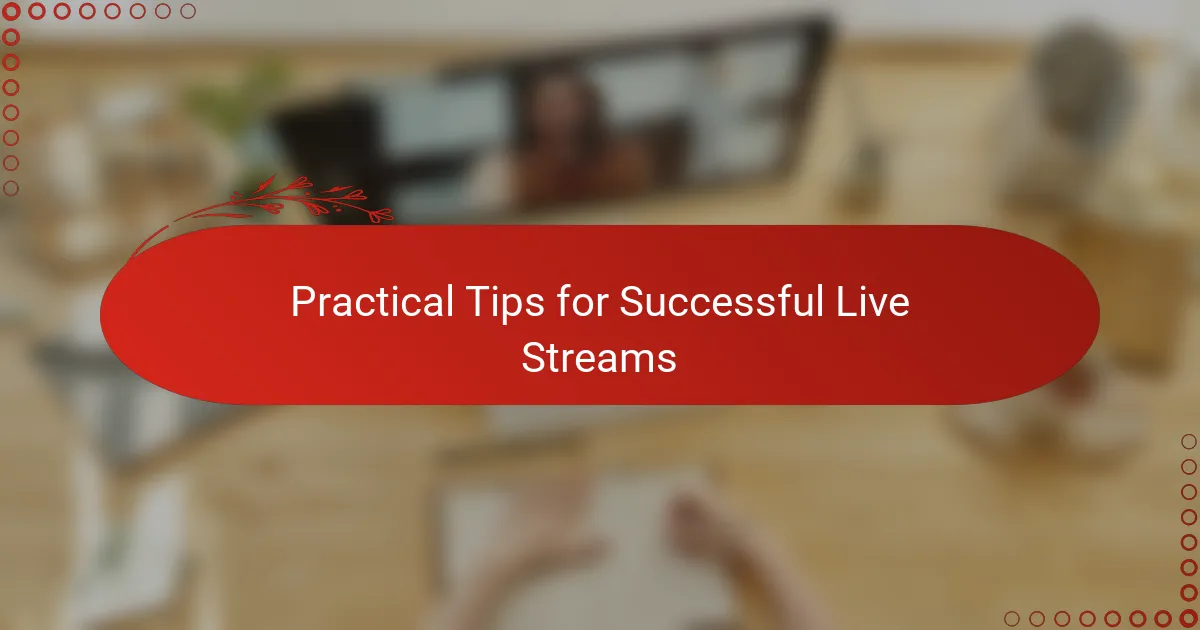
Practical Tips for Successful Live Streams
One thing I quickly learned is that a stable internet connection is non-negotiable for smooth live streams. I remember once going live with spotty Wi-Fi and immediately regretting it when my broadcast kept cutting out. Have you ever experienced that frustrating pause mid-sentence? Ensuring strong connectivity beforehand saved me a lot of headaches later.
Another tip I swear by is to keep your equipment simple but reliable. In my early days, I tried juggling multiple gadgets, thinking more gear meant better quality, but it just made things complicated. Streamlining to just a good microphone and the Mixlr app kept me focused on delivering content, not troubleshooting tech.
Lastly, engaging with your audience in real time makes all the difference. I like to watch the chat window and respond to comments during the stream—it turns a one-way broadcast into a two-way conversation. Have you noticed how listeners stick around longer when you acknowledge them? That interaction builds a genuine connection that feels rewarding every time.

Troubleshooting Common Streaming Issues
One common hiccup I encountered was unexpected audio dropouts during my stream. It threw me off at first—like suddenly losing the thread of a conversation—but I quickly learned that checking my internet stability beforehand made all the difference. Have you ever felt that panic when your voice cuts out mid-broadcast? Trust me, a quick speed test before going live saves a lot of embarrassment.
Another issue that caught me off guard was feedback and echo, especially when I layered multiple microphones or speakers too close together. It was a headache initially, but repositioning my gear and using headphones helped me control the sound environment better. Sometimes, a small adjustment can clear up what seems like a complicated mess.
I also ran into confusion with audio input settings in Mixlr early on. The app is user-friendly, but mixing up devices was a rookie mistake I made more than once. Have you ever clicked “Go Live” only to realize your mic wasn’t even selected? Taking a moment to double-check inputs before hitting record became a habit that immediately boosted my confidence and stream quality.
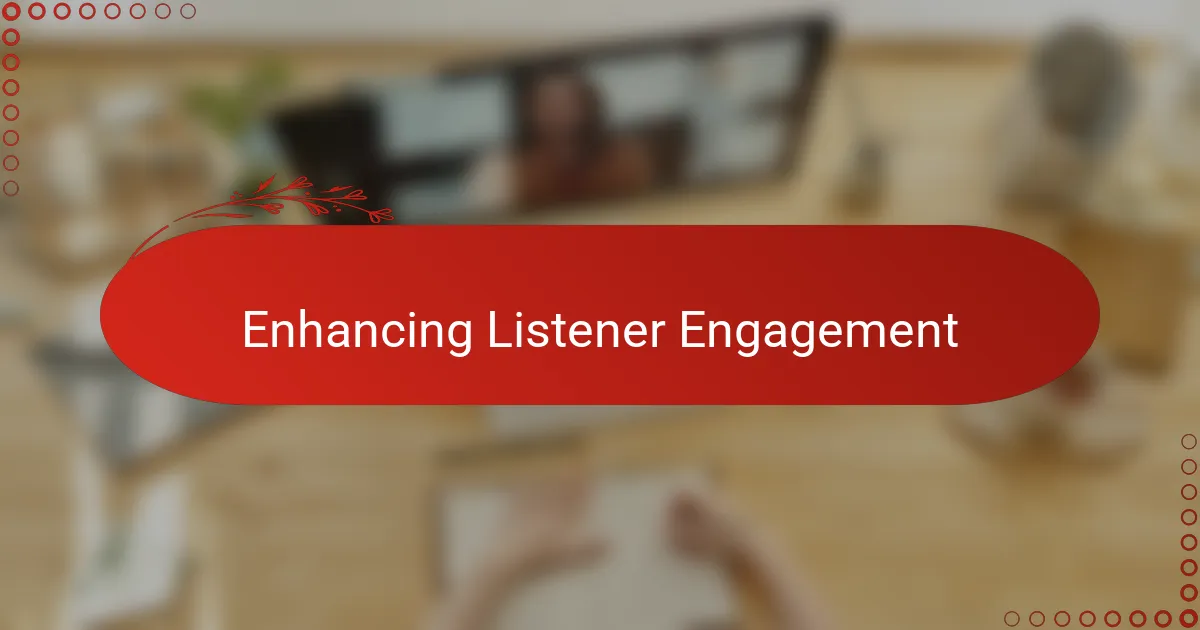
Enhancing Listener Engagement
Engaging listeners on Mixlr felt surprisingly natural to me, mainly because the platform’s chat feature made real-time interaction effortless. I found myself asking questions and getting instant feedback—it’s like having a conversation rather than just broadcasting into the void. Have you ever wondered how much more alive a show feels when listeners can chime in as you speak? That back-and-forth really kept my energy up and made the experience more rewarding.
What struck me was how these small moments of engagement built a sense of community. When listeners started recognizing each other’s names in the chat or responding to shout-outs, it transformed the broadcast from a solo act into a shared event. From my perspective, that connection is what makes a radio show memorable, not just the content but the feeling of being part of something.
Mixlr also made it easy for me to incorporate live requests and comments without missing a beat. At first, I worried multitasking would distract me, but the interface streamlined the process, letting me acknowledge listeners quickly. Isn’t it amazing how something as simple as responding to a “hello” or a song request can boost listener loyalty? In my experience, these interactions kept people coming back episode after episode.
